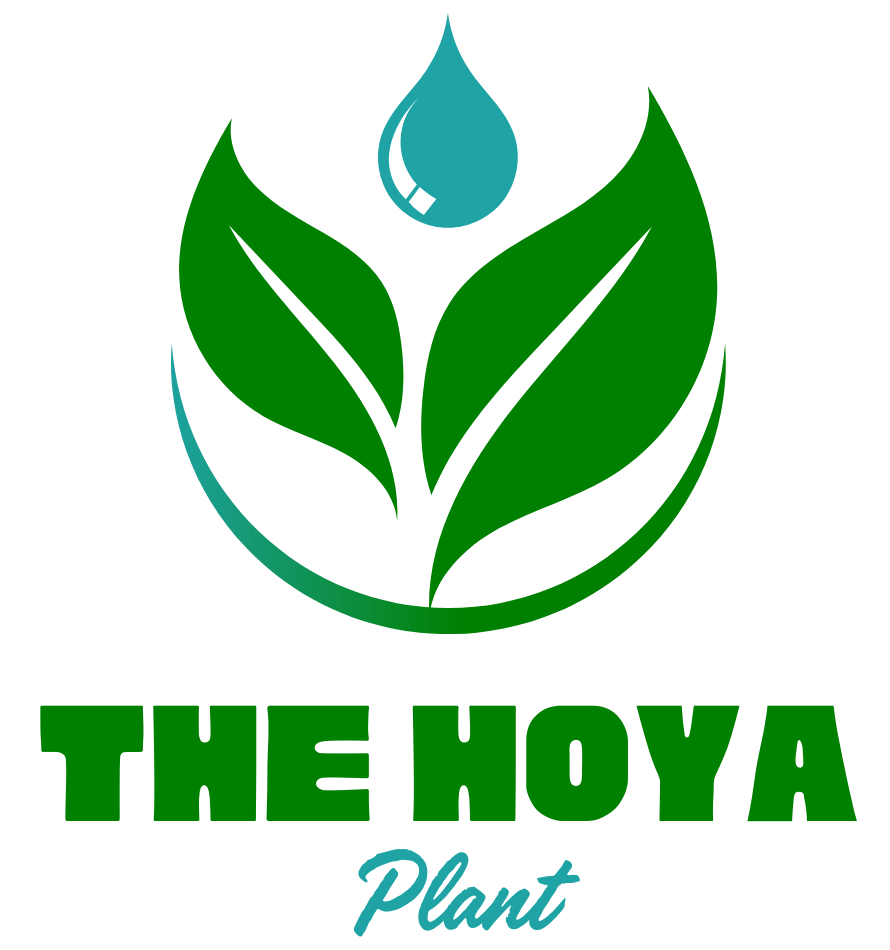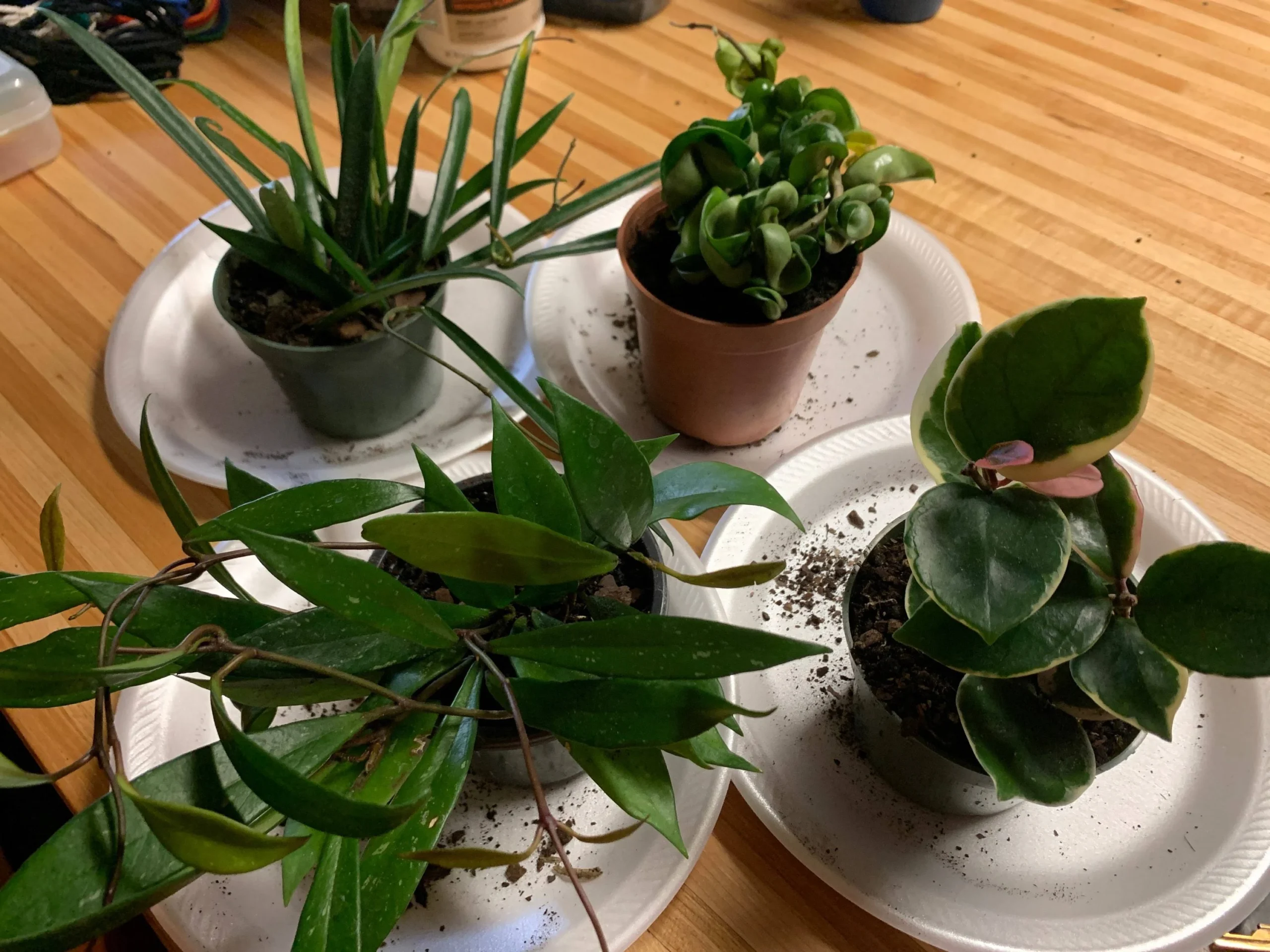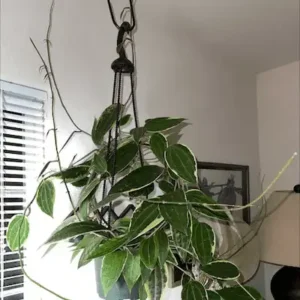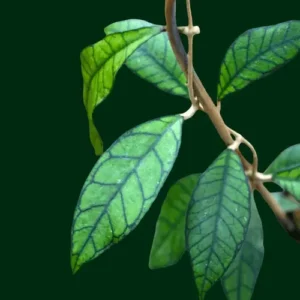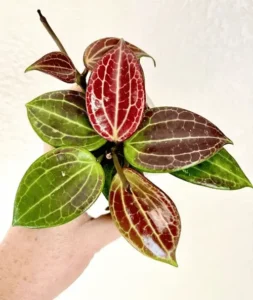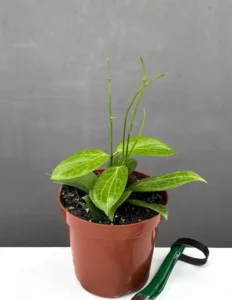In this ultimate care guide, we’ll explore everything you need to know about caring for hoyas, such as the best suitable conditions to prevent hoyas from pests ,diseases, overwatering, underwatering and no growth issues and other common problems. Many problems can be avoided by closely monitoring their environment and care requirements. Recognize issues early on and make changes to restore your hoya’s health. There are many varieties of Hoyas that create lovely, blooming houseplants when given the proper care.
General tips to care for hoya plants
Here are some general tips, to care for hoya plants.
Choose the suitable pot
-First, choose the right pot which is very important, regular plastic containers are best. Choose a manageable pot according to the hoya size.
-Secondly, choose the material that draws moisture from the soil as hoyas are badly affected by overwatering and root rot.
Care tips to avoid leaf spots, dark spots, and root rot
Leaf spots
Leaf spots result from overwatering. When there is excess water on top leaves.
Care tips
-To prevent leaf spot infections, avoid overwatering, and ensure the plant has good air circulation, keep leaves as dry as possible.
– Maintain proper pruning of your shrubs and trees to allow for adequate canopy ventilation.
Dark spots
Dark spots on the leaves are fungal infections caused by overwatering might be caused by temperature fluctuation. The plant was harmed by these dark patches as they progressively formed.
Care tips
-In case of dark spots apply cinnamon and other fungicides, minimize watering, and let your plant grow. –For better growth, longer watering intervals are a must for these beautiful houseplants.
Root rot and sooty mold
Yellowing, leaf spots, excess water on top leaves, sooty mold(develops on the leaves’ sugary, sappy leftovers), light and temperature angles, scale insects, pests, and root rot which are the silent killers and occur when the soil is too moist.
Care tips
-Make sure the soil drains well and the plant isn’t overwatered to avoid root rot.
-Care tips to avoid wrinkling, yellowing, and falling off leaves
wrinkling, yellowing, and falling off leaves
-Leaves turning yellow due to overwatering and lack of light. Wilted, wrinkled, shriveled leaves are frequently signs of a serious water deficit.
Care tips
-To prevent yellowing, wrinkling, or dropping off leaves and scale insects, isolate the plant and spray it with fresh water and rubbing alcohol.
-To avoid yellowing or wrinkled leaves, the best way is to water the plant moderately.
-Provide enough humidity and light to your houseplant for enough growth.
-Indirect sunlight is very beneficial for blooming this plant.
-If you place this plant in a place where direct bright sunlight comes, leaves will automatically turn yellow.
-To avoid all the above issues, replace the soil with fresh and clean soil. Once you have thoroughly cleaned the plant, it will automatically grow better.
Care tips to avoid mold and fungus diseases
Mold and fungus diseases
Mold and fungus which are the silent invaders discoloration or powdery spots on leaves are also common problems. It is also susceptible to a range of common ‘sap-sucking’ houseplant pests including aphids, mealybugs, scale and spider mites. Hoya fungal leaf spots and other fungal or bacterial diseases commonly affect this type of plant which is caused by brown spots on the leaves. Here is the ultimate care guide to prevents hoyas from mold and fungus diseases.
Care tips
-To prevent mold and fungs cover and scrub the affected area with bleach, a fungicide, a detergent, or water and then dry it.
-Before remodeling, remove any residue from the cleaning chemical mixture and thoroughly dry the surface of the room where the houseplant is kept.
-Use air conditioners and dehumidifiers to lower the amount of moisture in the air. Keep the humidity inside your home at or below 60%. Insulate cold surfaces including windows, floors, and outside walls to lessen condensation. Hoyas thrive in bright, indirect sunlight with stable room temperatures of 60°F and 85°F(16°C – 29°C).
-Dry damp areas in a day or two to prevent the growth of mold.
Care tips to avoid aphids, mealybugs, spider mites, and wrinkled leaves
Aphids, mealybugs, spider mites, and wrinkled leaves
The hoya plant is harmed by mealybugs, spider mites, and aphids. Root rot may result from the container holding too much water if the plant is not kept root-bound. Additionally, overwatering may prevent the plant from flowering and blooming. Thinning, brown, or wrinkled leaves can mean that the plant is allowed to dry too much between watering. Here is the ultimate care guide to prevent Hoyas from aphids, mealybugs, spider mites, and wrinkled leaves.
Care tips
-Use neem oil, check plants frequently, keep leaves clean, apply rubbing alcohol, steer clear of overwatering, and introduce natural predators to ward off aphids, mealybugs, and spider mites.
-Aphid infestations can be avoided by maintaining target plants well-watered, fertilized, and healthy, as well as by eliminating host weeds and neglected stressed plants. Aphid infestations originate locally, aphids can be sprayed with organic garlic and chili sprays, squished with fingers and thumb, or eliminated from plants with a water jet.
-Most “soft” insecticides and biological agents, which are easily accessible to home gardeners, can be used to control mealybugs.
–Leptomastix dactylopii and Anagyrus fusciventris are two parasitic wasps that can be released into an affected area to suppress mealybug populations effectively.
FAQs What is the best way to care for a Hoya plant? Use air conditioners and dehumidifiers to lower the amount of moisture in the air. Keep the humidity inside your home at or below 60%. Insulate cold surfaces including windows, floors, and outside walls to lessen condensation. Hoyas thrive in bright, indirect sunlight with stable room temperatures of 60°F and 85°F(16°C – 29°C). Do hoyas prefer to climb or hang? Hoya plants are climbing or trailing vines, making them ideal for hanging baskets, trellises, or being trained to grow along supports. They are a great choice for both beginners and experienced plant lovers looking for striking, low-maintenance additions to their collection. What position does a Hoya like? Hoya plants prefer a position where bright, indirect sunlight comes. Keep away them from radiators and out of cold draughts. |
Conclusion
In conclusion, Hoya plants are a delightful addition to any indoor or outdoor garden, offering both captivating foliage and stunning, fragrant flowers. While relatively low-maintenance, providing the right balance of light, humidity, water, and care will ensure your hoya thrives for years. By understanding their natural habitat, adjusting your watering routine, using well-draining soil, and encouraging blooming through proper pruning and placement, you can enjoy the full beauty of these unique plants. With patience and dedication, hoyas will reward you with their long-lasting blooms and resilient nature, making them a true gem in any plant collection.
